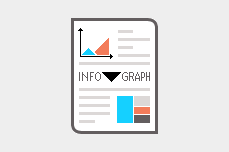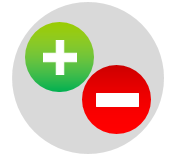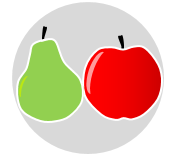
Also known as Decision Matrix, Multiple Criteria Decision Analysis and Weighted Criteria Matrix.
Variants include Pugh Matrix and Pairwise Comparison Matrix.
Many real-life decision-making situations have several conflicting criteria that need to be considered simultaneously. Traditionally, these complexities are often dealt with through the application of trial-and-error methods, or through the reliance on the experience of people. In such situations, decision makers are required to use prioritization methods in order to make effective decisions. So, prioritization is an essential skill that needs to be mastered by professionals seeking optimal allocation of their time and resources.
A Prioritization Matrix is a decision-making tool that allows to select the most appropriate alternative after evaluating multiple, often conflicting, criteria. It provides a structured framework for the arrangement of items into an order of importance, facilitating the selection and determination of subsequent actions. This might involve a project that needs to be initiated, an issue that requires resolution, a solution that must be implemented, or a customer requirement that needs to be fulfilled.
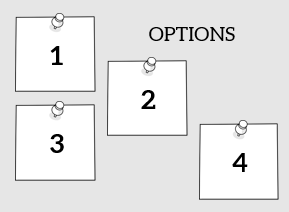
Evaluation Criteria
Developing a list of evaluation criteria is the first step before prioritizing alternatives. These criteria represent the standards against which the different alternatives will be measured and compared, providing an objective and consistent basis for comparison. Brainstorming, affinity diagrams and voting can be used to generate, organize and streamline the evaluation criteria. It is important, however, when developing the evaluation criteria to ensure that costs, benefits and risks are all taken into consideration.
Once agreement is reached on the evaluation criteria, the next step involves assigning weights to each criterion based on their perceived importance as determined by the team and relevant stakeholders. For instance, in a hiring scenario, skills might carry less weight than experience as it is considered by the recruitment team to be less important. The simplest way to weight the evaluation criteria is by allowing the team members to distribute a certain number of points (say 100) between the selected criteria.
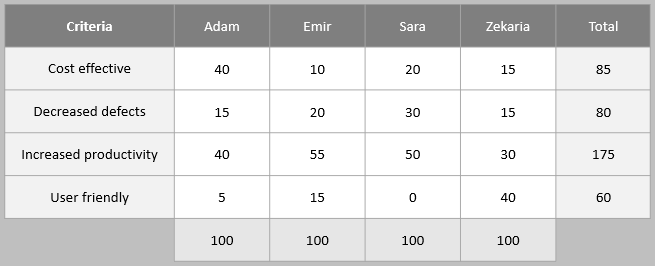
Subsequently, a prioritization matrix template can be used as an operational tool to list criteria against alternatives, assign weights to criteria, and execute the prioritization exercise. Four different formats are available for conducting the prioritization analysis to suit various preferences.
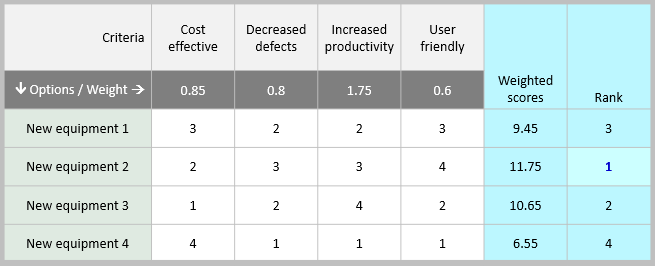
Conducting a Prioritization Exercise
The following steps describe how to conduct a prioritization exercise within a team-based environment.
- Explain the purpose for constructing the prioritization matrix.
- Identify and agree on the alternatives that need to be prioritized.
- Ensure that the evaluation criteria and their weights are agreed by all.
- Facilitate the prioritization session by allowing each team member to rank the alternatives against each criteria from best to worst.
- Collect the team’s rank scores, average and add them up on one worksheet.
- Calculate the final weighted scores for each alternative.
- Sort the items by their ranks to make them clearer for communication and decision making.
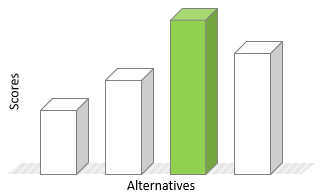
Example
This example illustrates a prioritization analysis that was conducted to select the most efficient data collection method at a workplace. It’s important to note that a high score doesn’t mean expensive but cost-effective.

Example
A manufacturing company needs to select two projects to be implemented this year. To assist in this decision, the following project options and criteria are to be considered.
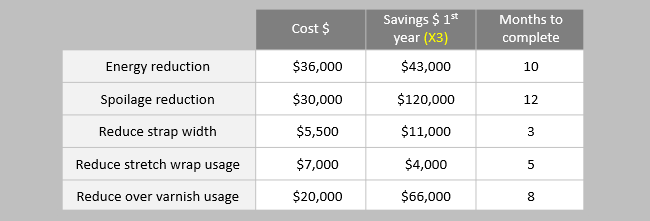
It was agreed that ‘savings’ would be given a weight of 3 as it is relatively more important compared to the other two criteria. In the example below, the team has used the prioritization matrix to select the most profitable among the five candidate projects.


When dealing with only two evaluation criteria, a simplified four-field matrix can be used to present the alternatives.
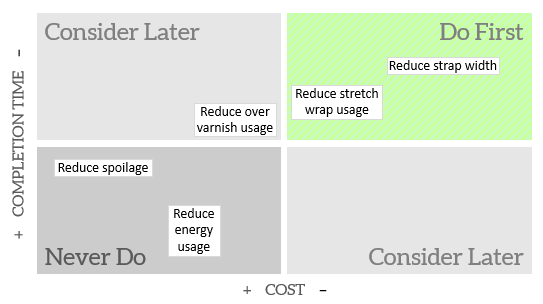

There are many tools that can help you to conduct a prioritization analysis. One of the simplest and most straightforward ways is to use prioritization matrix template.
Wrapping Up
A Prioritization Matrix is a decision-making tool used to evaluate and rank alternatives based on multiple criteria. It can be used in diverse scenarios, including initiating projects, resolving issues, implementing solutions, and meeting customer needs. Various formats of the matrix are available for conducting the prioritization analysis to suit various preferences. And when implemented in a team-based manner, it promotes consensus within the team and encourages coordinated action.
Other Formats
Do you want to use the slides in your training courses?

Prioritization Matrix Training Material – $18.85
Related Articles
Related Templates


